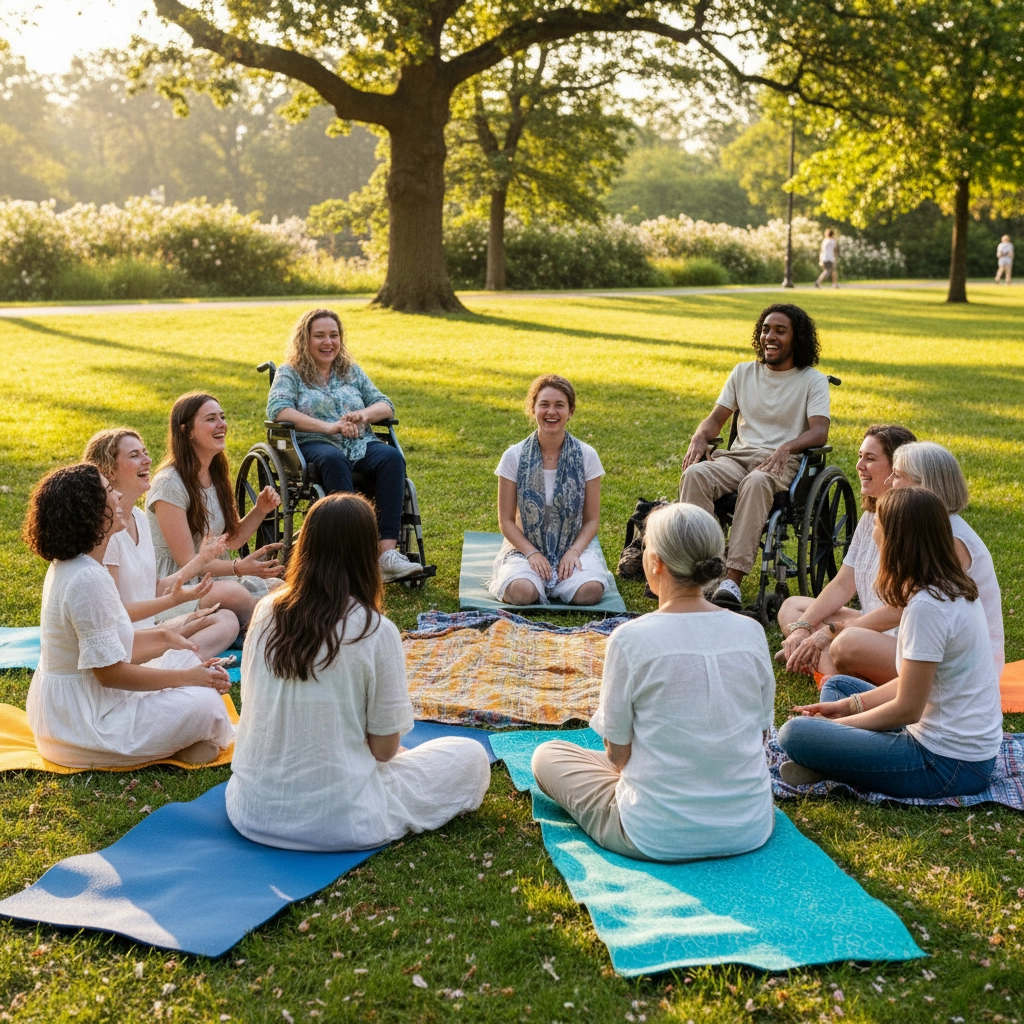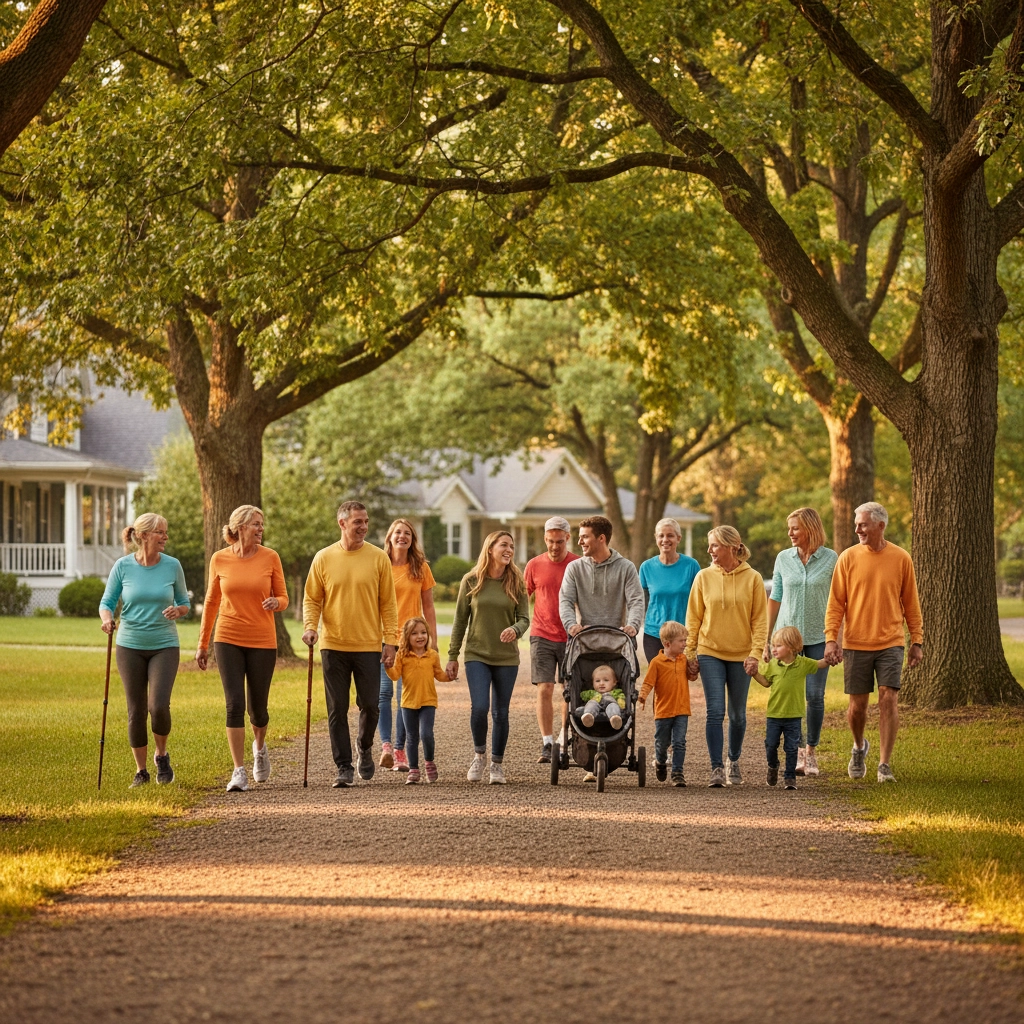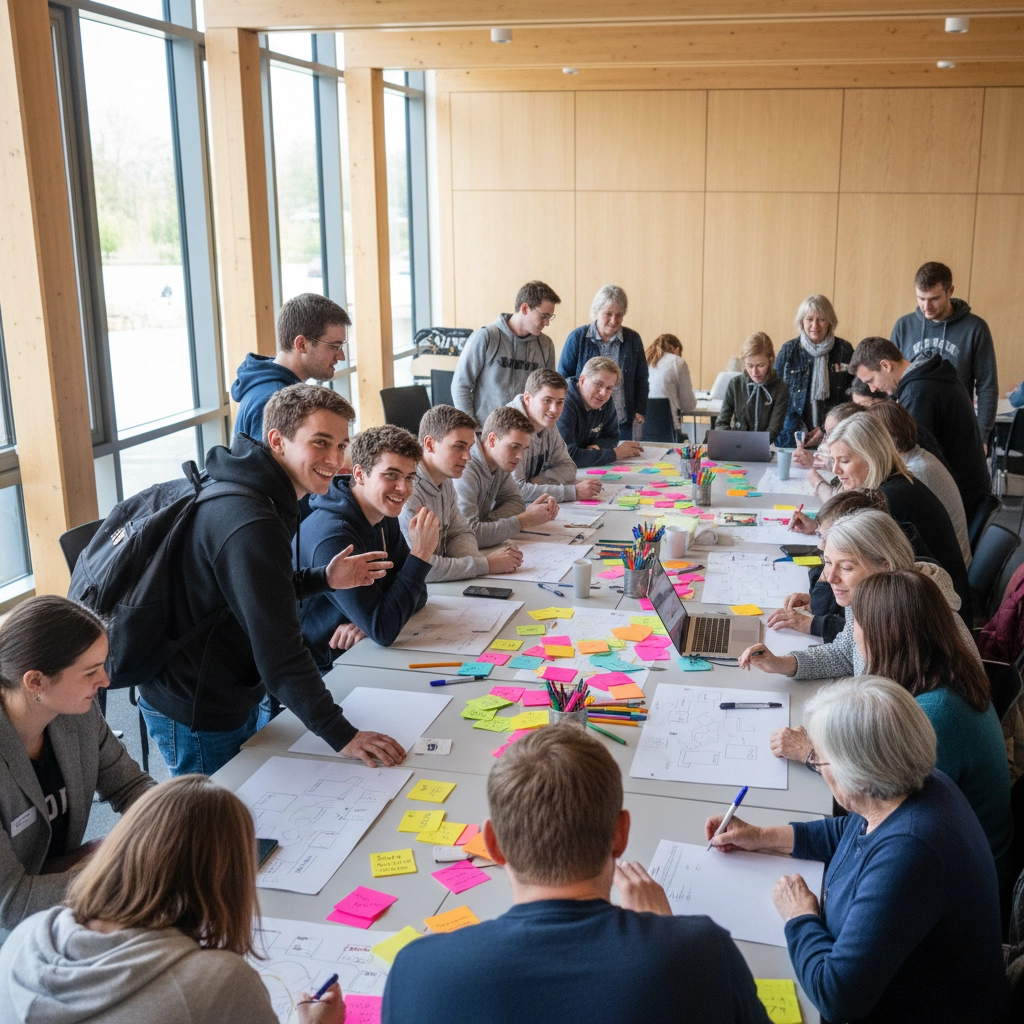The Ultimate Guide to Inclusive Community Wellness: How to Create Programs That Unite Every Generation
- luanneberk
- Sep 22
- 5 min read
Creating wellness programs that actually work for everyone in your community isn't just about offering different activities for different age groups. It's about building something bigger, programs that bring generations together, where everyone feels welcome, valued, and excited to participate.
The truth is, most community wellness initiatives fail because they treat different generations like separate species. Baby Boomers get their water aerobics, Gen X gets their boot camps, and Millennials get their yoga classes. Meanwhile, Gen Z is nowhere to be found, and nobody's really connecting with anyone else.
But what if we flipped the script entirely?
Why Intergenerational Wellness Actually Works
Here's what most people don't realize: when you create programs that intentionally mix age groups, magic happens. Older adults bring wisdom, patience, and life experience. Younger participants contribute energy, fresh perspectives, and often tech-savvy solutions. The middle generations? They're the perfect bridge, understanding both sides and helping everyone connect.
Research shows that intergenerational programs don't just improve physical health, they boost mental wellbeing, reduce social isolation, and create stronger community bonds. When a 70-year-old teaches a 25-year-old how to grow tomatoes while learning how to use Instagram in return, both people walk away enriched.

Breaking Down the Barriers
Before you can bring generations together, you need to understand what's keeping them apart. Let's be honest about the real obstacles:
Scheduling Conflicts: Parents with young kids can't make evening classes. Retirees prefer daytime activities. Working adults are swamped on weekdays.
Physical Limitations: Programs need to accommodate everything from mobility issues to different fitness levels without making anyone feel left out.
Technology Gaps: Some participants love apps and online booking. Others prefer phone calls and paper flyers.
Cultural Differences: Different generations have varying comfort levels with group activities, communication styles, and wellness approaches.
The good news? These aren't insurmountable problems, they're design challenges waiting for creative solutions.
The Foundation: Universal Wellness Principles
Successful intergenerational wellness programs start with principles that resonate across all age groups:
Connection over Competition: Focus on building relationships rather than who can do the most push-ups or hold the longest plank.
Purpose-Driven Activities: Give people a reason to show up that goes beyond personal fitness. Community gardens, charity walks, and skill-sharing workshops all create meaning beyond the individual.
Flexible Participation: Design programs where people can contribute in different ways. Maybe grandparents can't keep up with the cardio, but they can share recipes for the healthy cooking component.
Celebration of Differences: Instead of trying to make everyone the same, highlight what each generation brings to the table.
Proven Program Models That Work
Community Gardens: Where Generations Grow Together
Community gardens are wellness goldmines. They combine physical activity, stress relief, social connection, and practical skills all in one space. Set up plots where different age groups can work side by side, sharing knowledge about everything from companion planting to preserving harvests.
The magic happens when a teenager shows a senior how to use a soil pH app while learning about crop rotation from someone who's been gardening for decades.
Walking Groups with a Twist
Regular walking groups are great, but walking groups with purpose are transformative. Try "History Walks" where older residents share stories about neighborhood changes, "Nature Identification Walks" where everyone learns together, or "Community Problem-Solving Walks" where participants brainstorm solutions to local challenges.

Skill-Sharing Workshops
Create monthly workshops where community members teach each other practical skills. One month it's smartphone photography led by a teenager, the next it's basic home repair taught by a retired contractor. These programs naturally create intergenerational mentoring relationships that extend far beyond the workshop.
Adaptive Sports and Games
Traditional sports can exclude people, but adaptive versions bring everyone together. Seated volleyball, walking basketball, or modified pickleball create inclusive environments where mobility differences become creative challenges rather than barriers.
Cooking and Nutrition Circles
Food brings people together like nothing else. Monthly potluck prep sessions where participants share cultural recipes, cooking techniques, and nutrition tips create natural intergenerational bonding. Plus, everyone goes home with practical skills and often new friendships.
Implementation Strategy: Making It Actually Happen
Start Small and Build Momentum
Don't try to launch five different programs at once. Pick one concept that fits your community's interests and infrastructure. Test it, refine it, and let success stories spread naturally.
Create Mixed-Age Leadership Teams
Your planning committee should include voices from different generations. When programs are designed by diverse age groups, they naturally accommodate diverse needs.
Flexible Scheduling Solutions
Offer the same program at different times or create "drop-in" style activities where people can participate when it works for their schedule. Consider seasonal variations too, summer programs might focus on outdoor activities while winter offerings emphasize indoor community building.
Address Accessibility Proactively
Make sure venues are physically accessible, offer transportation assistance when possible, and provide materials in different formats. Create sliding scale pricing and scholarship options so financial barriers don't exclude anyone.

Technology: Bridge or Barrier?
Technology can either unite or divide your intergenerational programs. The key is using it strategically:
Simple Registration Systems: Make signing up easy for everyone, with both online and phone options.
Photo Sharing: Create simple ways for participants to share photos from activities, which helps build community identity.
Communication Mix: Use multiple channels, text reminders for younger participants, phone calls for others, and community bulletin boards for everyone.
Digital Literacy Integration: Instead of avoiding technology, make learning it part of the program. Pair tech-savvy younger participants with those who want to learn.
Measuring Success Beyond Numbers
Yes, track attendance and health metrics, but also pay attention to:
Are people forming friendships across age groups?
Do participants stay involved long-term?
Are people volunteering to help with other community initiatives?
Do you see increased community pride and engagement?
These qualitative measures often matter more than quantitative ones when it comes to true community wellness.
Creating Your Action Plan
Ready to transform your community's wellness programming? Start with these steps:
The Ripple Effect
When you create truly inclusive wellness programs, you're not just improving individual health: you're strengthening the entire community fabric. You're creating spaces where different generations see each other as resources rather than obstacles, where wisdom flows in all directions, and where everyone has something valuable to contribute.
The best part? These programs often become self-sustaining as participants take ownership and leadership roles, creating lasting community assets that continue growing long after the initial launch.
Ready to bring generations together in your community? Visit our youth camps page to see how we're already building intergenerational connections, or check out our forum to connect with other community leaders who are making inclusive wellness a reality.
Your community's wellness transformation starts with one program, one conversation, and one connection at a time. Let's make it happen together.
